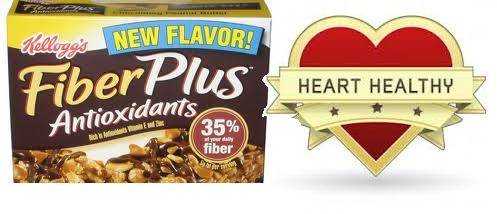Health claims for food products are brief statements on the package that describes the relationship between a nutrient and a disease. Health claims must be linked directly to the health-related condition in order to be considered truthful. Also, it must not be misleading.
Analyzing Health Claims to identify their truthfulness
The following are some claims and what is required to make such claim.
- Calorie free – Less than 5 calories per serving.
- Cholesterol free – Less than 2 mg cholesterol and 2 g or less saturated fat per serving.
- Enriched or fortified – Nutritionally altered so one serving provides at least 10% more of the Daily Value of a nutrient than the comparison food.
- Extra lean – Less than 5 g fat, 2 g saturated fat, and 95 mg of cholesterol per serving and per 100 g.
- Fat free – Less than 0.5 g of fat per serving.
- Free – “Without,” “no,” or “zero” can all be used in place of “free.”
- Fresh – Generally used on food in its raw state (not foods that has been frozen or cooked, or on food that contains preservatives).
- Fresh-frozen – Foods that have been quickly frozen while still fresh.
- Good source – One serving provides 10-19% of the Daily Value for a particular nutrient.
- Good source of fiber – Contains 10 to 19% of the Daily Value for fiber (2.5-4.75 g) per serving. (If a food is not “low fat,” total fat per serving must be declared with reference to the food panel).
- High – 20% or more of the Daily Value for a particular nutrient per serving.
- High fiber – Contains 20% or more of the Daily Value for fiber (at least 5 g) per serving. (If a food is not “low fat,” total fat per serving must be declared with reference to the nutrition panel).
- Lean – Less than 10 g fat, 4 g saturated fat, and 95 mg cholesterol per serving and per 100 g.
- Light – 1) At least one-third fewer calories per serving than a comparison food; or 2) contains no more than half the fat per serving of a comparison food. If a food derives 50% or more of its calories from fat, the reduction must be at least 50% of the fat; or 3) contains at least 50% less sodium per serving than a comparison food; or 4) can refer to texture and/or color, if clearly explained, for example, “light brown sugar.”
- Low – “Little,” “few,” or “low source of” may be used in place of “low.”
- Low calorie – 40 calories or less per serving.
- Low cholesterol – 20 mg or less cholesterol and 2 g or less saturated fat per serving.
- Low fat – 3 g or less per serving.
- Low saturated fat – 1 g or less saturated fat per serving and 15% or less calories from fat.
- Low sodium – 140 mg or less per serving.
- More – At least 10% more of the Daily Value of a nutrient than the comparison food per serving.
- Made with organic ingredients – 70% organically ingredients and up to three organic ingredients.
- Organic – At least 95% organically produced ingredients; excluding water and salt, the remaining ingredients must be approved substances.
- Percent fat free – A claim made on a “low fat” or “fat free” product which accurately reflects the amount of fat present in 100 g of food; a food with 3 g of fat per 100 g would be “97% fat free.”
- Reduced – A food product nutritionally altered and contains 25% less of a nutrient or of calories than the regular or reference product.
- Salt or sodium free – Less than 5 mg per serving.
- Sugar free – Less than 0.5 g of sugars per serving.
- Unsalted – Has no salt added during processing. To use this term, the product it resembles must normally be processed with salt and the label must note that the food is not a sodium-free food if it does not meet the requirements for “sodium free.”
- Very low sodium – Less than 35 mg or less sodium per serving.
Don’t forget to leave your comments about this article, Health Claims.
You may also like:
Busting 10 myths on healthy eating
Healthy eating: taking control of what you eat
Healthy food choices
The facts about nutrition labels
Tips for healthy eating
Download our free toolbar
Join our Facebook fanpage
Subscribe to our Newsletter

